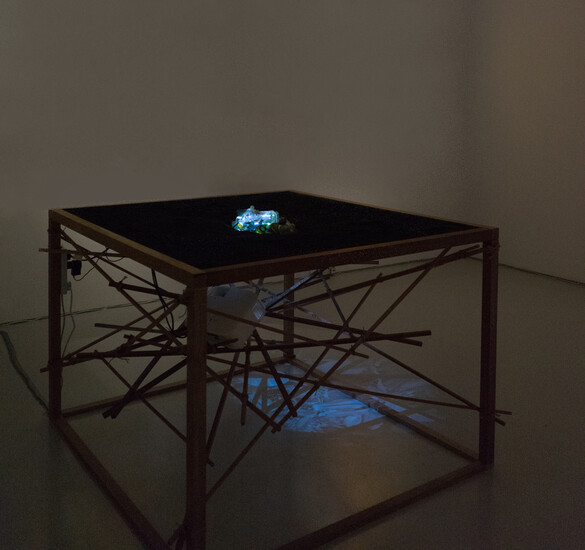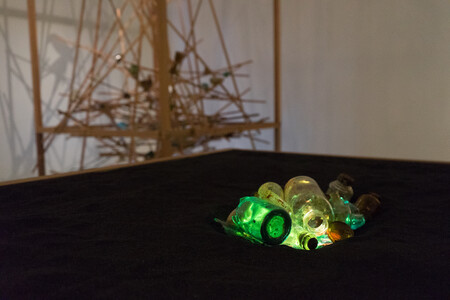Scattered across a table, glass fragments unearthed from the forest floor at Gillman glisten under shifting light. These shards—remnants of past lives and forgotten histories—have long been buried beneath the growth of a secondary forest, absorbed into the land as time erases their origins. Yet, despite this entanglement with the past, life finds a way to persist.
Projected from below, a video of the simpoh ayer in bloom illuminates the fractured glass. A pioneering species, the simpoh ayer is among the first to take root in disturbed landscapes, its large yellow flowers sustaining the forest’s earliest inhabitants. It is a harbinger of renewal, signaling the quiet transformation of abandoned spaces into thriving ecosystems.
This work considers the layered histories embedded within the landscape—how remnants of human presence become intertwined with cycles of natural regeneration. The glass, once discarded, now reflects the emergence of new life. In the overlooked strata of the past, the symbols of the divine reveal themselves.
Detail pictures:







